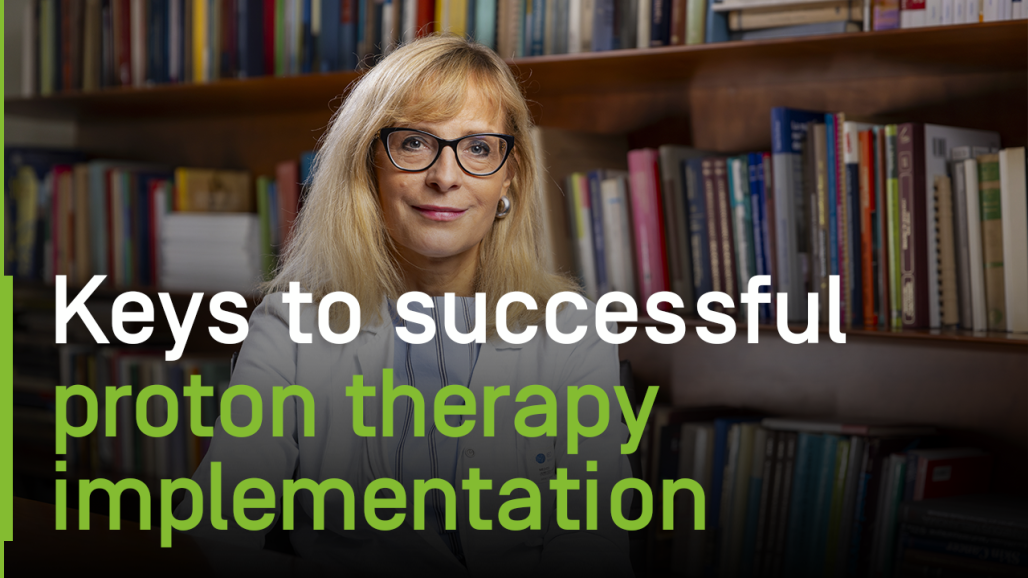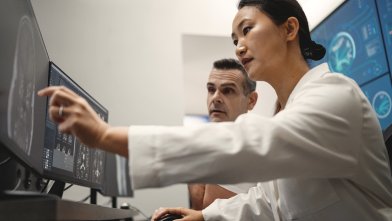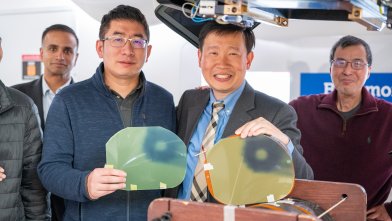A global call to improve equity and access in proton therapy from ESTRO’s President-Elect
As President-Elect of ESTRO, Prof. Barbara Jereczek-Fossa highlights the urgent need to make proton therapy more widely accessible. While its clinical potential is undisputed, too few patients currently benefit from it due to systemic, geographic, and financial barriers: "We need to do really a lot to broaden the access of the patients to proton therapy."
Prof. Jereczek-Fossa explains that, despite its proven benefits, proton therapy is still underutilized: “We know from ASTRO assessment1 that about 15-20% of all cancer patients candidates for radiotherapy may benefit from proton therapy. But in the real world, only 1% of cancer patients, candidates to radiotherapy, receive proton therapy.”
As ESTRO President-Elect, Prof. Jereczek-Fossa advocates for stronger research funding, broader access programs, and robust education systems to train the next generation of radiation oncologists in proton therapy. "The recent study from Lancet2 showed that among all public and private funding in cancer treatment, cancer research, less than 3% of cancer funding goes to radiotherapy. So I think that we really need to work on the awareness, on policy makers, on networking among ourselves and obviously collaboration here is key."
Prof. Jereczek-Fossa also highlights the need to tackle geographical, financial, and knowledge-based barriers to care. That includes investment in referral systems, hypofractionation research, and molecular-driven oncology.
Why IEO chose proton therapy: expanding precision care for complex cancer cases
At IEO, the clinical team faces highly complex cases daily—from pediatric patients to relapsed or pre-treated tumors near sensitive organs. Prof. Jereczek-Fossa explains how adding proton therapy to the center's portfolio helped unlock new therapeutic potential for these groups: “To broaden the options, therapeutic options to our patients, we decided to implement proton therapy as well. For the patients, this is a great option to have a very precise treatment.”
Prof. Jereczek-Fossa points out that proton therapy enables to treat “difficult tumors, challenging tumors, tumors that are near to very sensitive structures, young patients, pediatric patients, obviously, patients with already pre-treated tumors.”
Beyond the treatment precision and improved long-term patient outcomes, proton therapy also benefits hospitals and institutions that decide to add this modality to their cancer treatment arsenal. As Prof. Jereczek-Fossa explains: “having proton therapy means attracting a lot of interest, a lot of research opportunities, collaboration opportunities, networking opportunities, so this is really a benefit for the whole community, I would say. We noticed this halo effect with proton therapy, which means that our partners, research partners, and colleagues contact us not only for proton therapy, but also for all the services of our comprehensive cancer center. So it means to grow together, to collaborate together, to explore new fields, new areas of research, and clinical activity.”
ProteusONE in practice: why IEO chose IBA for its proton therapy journey
Once the clinical decision to pursue proton therapy was made, IEO needed a system that would meet clinical, technical, and operational goals. In this section, Prof. Jereczek-Fossa outlines why ProteusONE became their preferred solution and how IBA’s expertise and support contributed to a smooth implementation: “We chose IBA due to its wonderful track record in proton therapy technology, long experience, their reliability and their precision and the service they offer. We have chosen ProteusONE due to its compact design, user-friendly workflow, and scalability so we can upgrade it in the future.”
IEO’s selection of IBA’s ProteusONE was driven by key requirements such as reliability, upgradability, and seamless integration. As Prof. Jereczek-Fossa explains: “Proton therapy is an important investment, and we were looking for something that can be upgraded. This is important today because this area develops really fast. Having an IBA product means being able to upgrade it with new approaches and new technologies.” She highlights how ProteusONE’s beam quality made a real difference for a difficult-to-treat patient case: “I remember one young 27-year-old man with a skull-base tumor. Almost impossible to treat him with conventional radiotherapy. We did a very good plan. We discussed it with many colleagues, as well as with foreign centers. And yes, it was a successful story because he already had some symptom improvements, and we hope that it will also be a radiological response in the future as well.” She also shares her preference for treating in the supine position, focusing on patient comfort: “I believe that treatment in the supine position is much more comfortable compared to the seated or upright position. Since this is a high-precision therapy, it’s essential to ensure we treat the correct point in the body. Treatments can last 20 to 30 minutes, so I am very confident treating patients in a supine, relaxed position”.
Implementation success: training, teamwork, and referral system
The successful implementation of IEO’s proton therapy program didn’t happen overnight. It required years of planning, as well as intense on-site and external training. Prof. Jereczek-Fossa explains: “The training started two, three years before starting clinical activity. It was very intense, including training in many European centers with wonderful collaboration among centers. And then we started patient treatment a year ago with great support from the IBA on-site team.”
She also highlights the key role of building a referral network through outreach and education: “We started working on referral systems from the very beginning when we decided to have proton therapy. So at least two years before starting clinical activity. We did a lot of education with our local hospitals, with our colleagues, not only oncologists, surgeons, but also general practitioners. The referral system is key for proton therapy.” This effort fosters a collaborative, informed ecosystem around the use of proton therapy to ensure that eligible patients can be identified and referred efficiently.
Prof. Jereczek-Fossa's perspective, as ESTRO’s President-elect and IEO’s Chair of Radiation Oncology department, offers a compelling case for expanding access to proton therapy worldwide. Through her visionary leadership and hands-on clinical expertise, she demonstrates how targeted investment in training, infrastructure, and collaborative care can bring proton therapy closer to every patient who could benefit from it. With the integration of ProteusONE, IEO is setting new standards for oncology in Italy and beyond.
Disclaimer: The statements of the healthcare professional included in this testimonial reflect only his opinion and personal experience. They do not necessarily reflect the opinion of any institution with whom he is affiliated or IBA.
References:
- ASTRO Model Policies - American Society for Radiation Oncology (ASTRO). Available at: www.astro.org Accessed June 2025.
- McIntosh SA, et al. Global funding for cancer research between 2016 and 2020: a content analysis of public and philanthropic investments. Lancet Oncol. 2023;24(6):636-645. doi: 10.1016/S1470-2045(23)00182-1.




